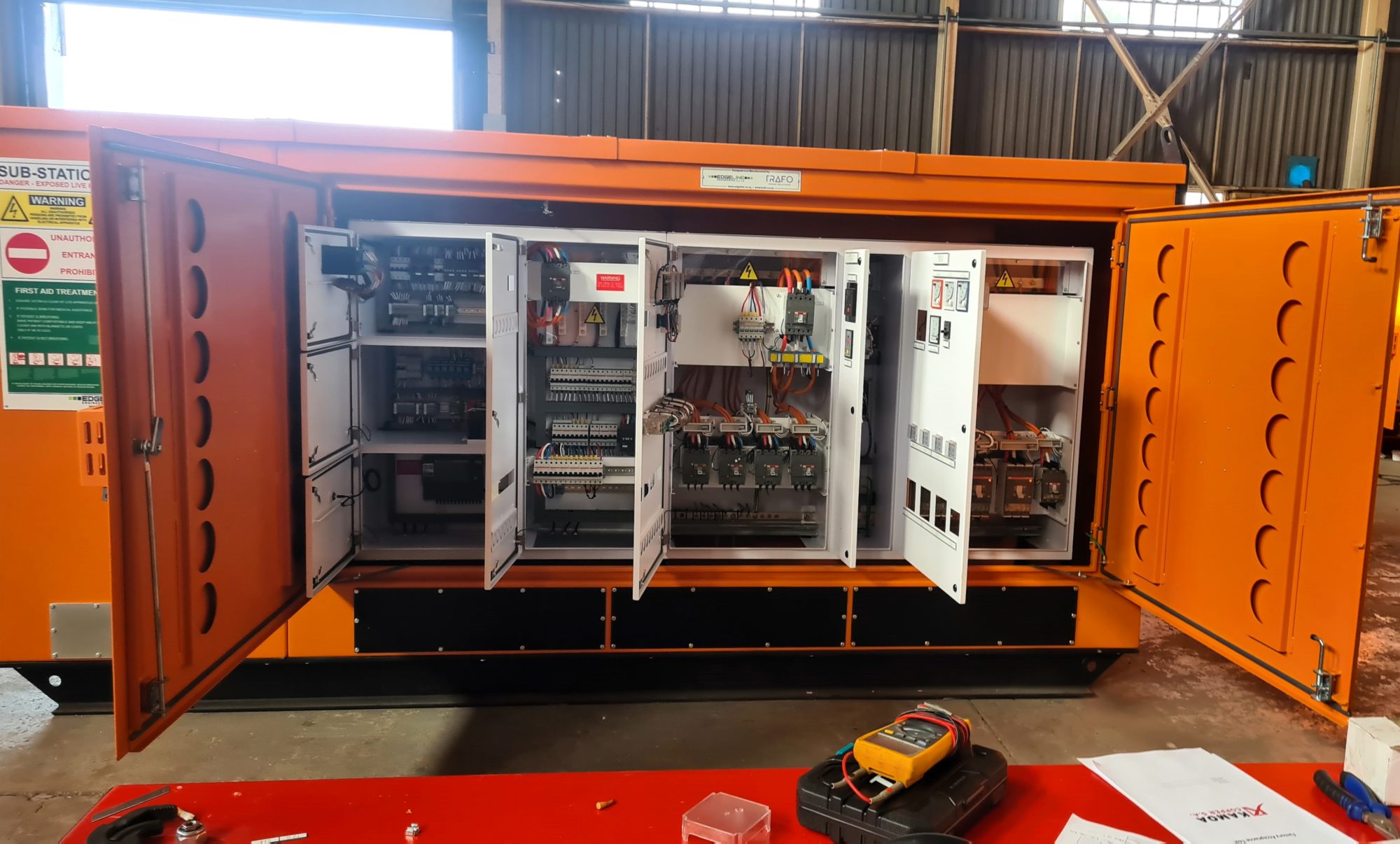Trafo Power Solutions says it has supplied 40 dry-type mini-substations, as well as seven standalone ring main units, to Kamoa Copper SA, one of the Africa’s largest and fastest growing copper operations, situated in the Democratic Republic of Congo. Kamoa Copper is the operator of the Kamoa-Kakula copper complex.
“We are immensely proud to be involved in this mega project,” says David Claassen, Managing Director at Trafo Power Solutions. “Considerable design work and planning went into this contract, with very demanding lead times to keep up with the mine’s rapid expansion.”
The mini-substations include units of between 630 kVA and 1,600 kVA capacity with primary voltages of 11 kV and 33 kV. The secondary voltage configurations are 400 V, 690 V and 1,000 V – and some units have dual-ratio secondaries. Protection against the ingress of water and dust was also designed into the units, with an IP54 ingress protection rating.
Fully designed and manufactured in South Africa, the mini-substations were completed in a streamlined production process that facilitated a fast track delivery in batches of five to six units every 10 days. After the manufacturing and assembly process, each unit went through a programme of intensive testing before it was ready for dispatch.
“The units are designed to be as compact as possible,” he explains. “While many will be used for surface infrastructure, the design had to ensure that they could be used underground, where space is limited.”
The underground environment is governed by stringent safety regulations and standards, making the dry-type transformer an ideal choice. This technology uses air rather than oil to cool the windings, making it safer with less risk of fire, explosion or environmental contamination through leakage. The windings in dry-type transformers are also encapsulated with cast resin, protecting them against humidity levels up to 95%.
Undertaking both the electrical and mechanical design, Trafo Power Solutions has ensured a limited footprint through the use of air-to-air heat exchangers. Air is channelled through the transformer windings and flows over the aluminium tubes of the heat exchanger, while a fan blows air through the tubes to cool the air on their outer surface.
“The substation design also includes arc protection, which will shut the unit down in the event of an arc occurring – before any further damage can be caused,” he says. Each mini-substation is equipped with a control system that will allow the protection functions to be monitored remotely.”
The contract was conducted through a leading South African engineering, procurement and construction management (EPCM) firm, and Trafo Power Solutions ensured that all units were delivered by the end of 2023.
“Our early engagement with the EPCM was important on this project, as it allowed our team to understand the project requirements and develop a cost effective solution,” Claassen says. During this process, all documentation was strictly managed within an online system, including designs, specifications and test certificates – to which the EPCM and end-client had easy access. In this way, designs could be uploaded, shared and signed off using this platform, further streamlining activities for the fast pace of the project.
“The ring main units are fully motorised and controlled externally by remote pendant switching,” he says. “This enhances safety and ease of management, so that personnel seldom have to open the panel doors which requires the necessary safety equipment and protocols.”
The transformers are rated for Class H insulation – for temperatures up to 180 degrees – while the dual-voltage boards are sizeable for a relatively complex voltage distribution system on each mini-substation.
“The detailed design and variety of solutions within the complete contract package really highlights the technical capability of the Trafo Power Solutions team,” says Claassen. “This can be seen in the mini-substation from the medium voltage side and its control and protection functionality, through to the low voltage distribution and the customised transformer design for these applications.”
He emphasises that the standard attributes of dry-type transformers allow them to operate reliably with very little maintenance. With air rather than oil for cooling, for instance, they do not require any regular oil testing or oil changing.
The robust nature of dry-type transformers makes them well-suited for mining applications, whether surface or underground. Claassen notes that Trafo Power Solutions’ extensive experience in Africa reflects that dry-type technology is becoming more popular in the mining sector. The reasons for this trend include their inherent safety, their reliability and their ability to operate without much maintenance.











